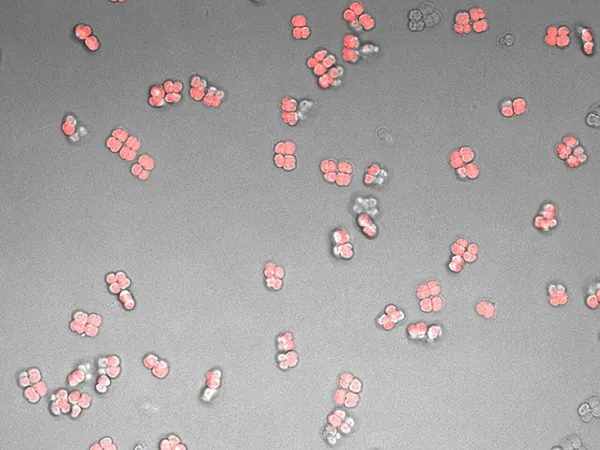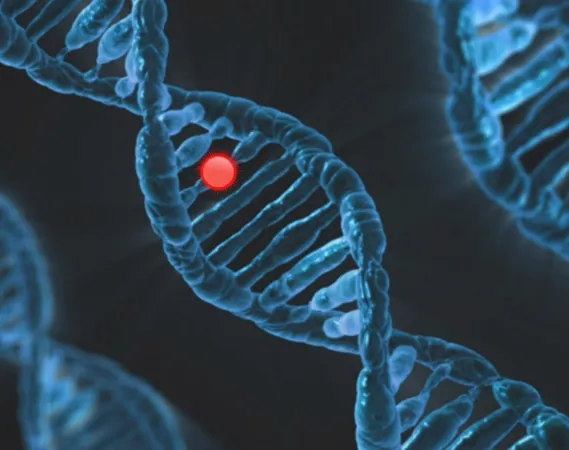
Meet the Masterminds Encoding Poetry into Immortal Bacteria!
2025-08-08
Author: Jia
Art Meets Science in a Groundbreaking Collaboration
Ever heard the saying, "life is short, and art is long"? This timeless wisdom echoes through the ages, but preserving art poses a challenge, as classics risk fading over time. Enter the dynamic duo of world-renowned poet Christian Bök and Texas engineer Lydia Contreras—a collaboration that's pushing the boundaries of both art and science.
They've unveiled an ambitious project that encodes a poem into a 'deathless bacterium'! By harnessing synthetic biotechnology, they transformed Bök's poetic tribute to a Greek tragedy into a living art form that promises to endure.
The Vision Behind the Project
Bök expressed the profound significance of their creation: "We've made very few things that could outlast the sun. This artifact shows that technology can preserve messages over Earth's lifespan, safeguarding our cultural heritage from planetary disasters." This innovative work debuts in his latest book, "The Xenotext: Book 2," marking a milestone for a project that has spanned over 25 years!
From Concept to Reality: The Science Behind the Art
In a fascinating twist of fate, Bök's initial foray into genetically encoding poetry began much earlier. His first book, released in 2015, sparked interest in the potential of microbial communication. This time, however, the stakes were higher. Partnering with Contreras and her research team, they leveraged the extraordinary resilience of Deinococcus radiodurans—often dubbed "Conan the Bacterium"—to create their masterpiece. This microorganism thrives under extreme conditions, making it the perfect canvas for their encoded verse.
Unlocking Genetic Poetry
Bök’s poem "Orpheus"—which begins with the line "Any style/of life is prim"—is ingeniously embedded within the bacterium’s DNA. When activated, this microbe not only reads the poem but also generates a complementary piece titled "Eurydice," kicking off an astounding genetic dance that translates letters into amino acids, ultimately creating a glowing protein that brings the art to life!
The Story of Orpheus and Eurydice: A Classical Connection
Orpheus and Eurydice is not just any tale—it's a tragic story of love, music, and loss. Orpheus's quest to rescue Eurydice from the underworld ends in heartbreak, highlighting the themes of love and fate that resonate deeply in Bök's works.
A Revolutionary Leap for Data Preservation
The implications of this project reach far beyond poetic expression. As living organisms prove to be formidable information storage systems, researchers explore ways to utilize them for revolutionary data storage methods—drastically improving efficiency and longevity. "Ultimately, how do we store information that will forever survive?" questions Contreras. With projects like this, the future of data preservation is looking brighter than ever!
An Artistic Revolution Awaits
As Bök and Contreras pave the way for fusing art with advanced biotechnology, their project could redefine how we think about creativity and legacy. Imagine a world where messages from the past are not only preserved but also brought to life! This captivating partnership is a testament to what can happen when the realms of art and science intersect.


 Brasil (PT)
Brasil (PT)
 Canada (EN)
Canada (EN)
 Chile (ES)
Chile (ES)
 Česko (CS)
Česko (CS)
 대한민국 (KO)
대한민국 (KO)
 España (ES)
España (ES)
 France (FR)
France (FR)
 Hong Kong (EN)
Hong Kong (EN)
 Italia (IT)
Italia (IT)
 日本 (JA)
日本 (JA)
 Magyarország (HU)
Magyarország (HU)
 Norge (NO)
Norge (NO)
 Polska (PL)
Polska (PL)
 Schweiz (DE)
Schweiz (DE)
 Singapore (EN)
Singapore (EN)
 Sverige (SV)
Sverige (SV)
 Suomi (FI)
Suomi (FI)
 Türkiye (TR)
Türkiye (TR)
 الإمارات العربية المتحدة (AR)
الإمارات العربية المتحدة (AR)